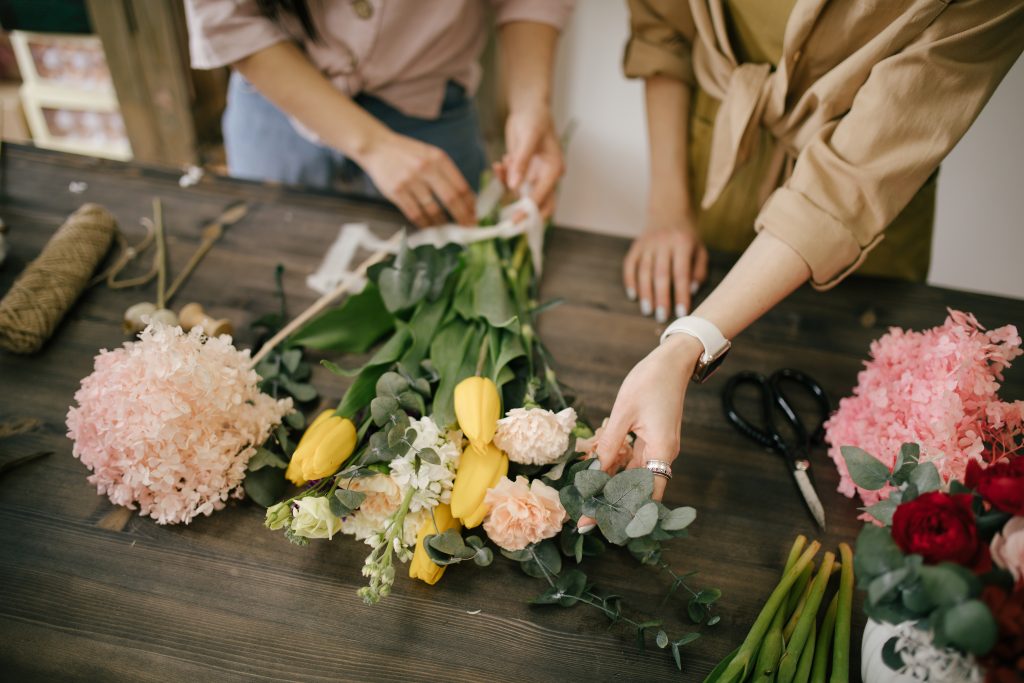There’s something undeniably uplifting about a fresh flower arrangement. Whether it’s a classic rose bouquet, a wild garden mix, or a minimalistic monochrome display, flowers instantly bring warmth, color, and elegance to any space. But creating a stunning, professional-looking flower arrangement at home might feel intimidating — until now.
In this guide, we’ll cover 10 expert tips to arrange flowers for maximum impact, transforming ordinary blooms into eye-catching works of natural art. Whether you’re arranging flowers for a special occasion or simply to brighten up your everyday surroundings, these practical, creative tips will help you style them like a pro.

Why Thoughtful Flower Arrangement Matters
Before we dive into the tips, let’s quickly reflect on why a well-arranged flower display can be so impactful:
- Enhances any room’s ambiance
- Adds color, texture, and life to your decor
- Elevates mood and reduces stress
- Creates visual harmony and balance
- Serves as a personalized statement piece
With these benefits in mind, let’s get arranging!

1. Choose the Right Vase
The vase isn’t just a container — it’s part of the overall look. The shape, size, and color of the vase should complement both the flowers and the setting.
Tips:
- Use a tall, narrow vase for long-stemmed flowers like lilies or sunflowers.
- Opt for a short, wide vessel for compact arrangements like peonies or ranunculus.
- Transparent vases showcase clean, fresh stems; colored or ceramic vases add artistic flair.
- Make sure the vase size suits the number of stems — too crowded or too sparse can throw off balance.
Pro Tip: When in doubt, a classic clear glass cylinder or mason jar works beautifully for most casual arrangements.

2. Work with Fresh, Quality Flowers
The impact of your arrangement depends on the quality of the flowers you start with.
Tips:
- Choose blooms with firm stems, healthy leaves, and vibrant petals.
- Avoid wilted, brown-edged, or overly mature flowers.
- If possible, buy from a local flower market or farm for maximum freshness.
- Condition your flowers before arranging by trimming stems at a 45° angle and removing leaves below the waterline.
Pro Tip: Place freshly cut stems in clean, room-temperature water for at least an hour before arranging to help them perk up.

3. Select a Harmonious Color Palette
Choosing the right color scheme sets the mood for your arrangement.
Tips:
- Use a monochrome palette for elegance and simplicity.
- Combine complementary colors (like purple and yellow) for bold contrast.
- Blend analogous colors (like red, pink, and orange) for a harmonious, natural look.
- Include white or green elements to balance out vibrant colors.
Pro Tip: When unsure, stick to three main colors and mix different shades and textures within those hues.

4. Focus on Balance and Proportion
A successful flower arrangement feels balanced and proportional, with neither one side nor element overpowering the others.
Tips:
- Follow the one-and-a-half rule: flowers should be about 1.5 times the height of the vase.
- Use a focal flower (like a rose or hydrangea) and support it with smaller, filler blooms.
- Arrange flowers in odd numbers for a more natural, pleasing appearance.
- Distribute similar colors, shapes, and textures evenly throughout the arrangement.
Pro Tip: Step back and view your arrangement from different angles to check for balance.

5. Vary Flower Heights and Textures
Uniform arrangements can feel flat or stiff. Adding variety creates movement and visual intrigue.
Tips:
- Mix flowers of different stem lengths and head sizes.
- Use airy, delicate flowers like baby’s breath or Queen Anne’s lace as fillers.
- Add leafy greens, berries, or branches for depth and texture.
- Let a few taller stems extend slightly above the rest to create an organic, flowing look.
Pro Tip: Don’t cut everything to the same length. Intentional variation feels far more natural and artistic.
6. Start with Greenery
Professional florists often start with greenery as a structural base.
Tips:
- Use ferns, eucalyptus, or ruscus to create a supportive framework.
- Place greenery in the vase first, crisscrossing stems to form a loose grid.
- This grid helps hold flowers upright and evenly spaced.
Pro Tip: Greenery adds texture, volume, and a natural backdrop that makes blooms pop.
7. Create a Focal Point
Every eye-catching arrangement has a focal point — the bloom or cluster that draws attention first.
Tips:
- Choose a large, bold flower or a grouping of similar blooms.
- Position it slightly off-center for a modern, dynamic feel.
- Build the rest of the arrangement around this focal element.
Pro Tip: Use unique or unexpected blooms like proteas, orchids, or anthuriums to create standout focal points.
8. Embrace Negative Space
Don’t be tempted to overcrowd your vase. Let your arrangement breathe.
Tips:
- Leave space between flowers to highlight individual shapes and textures.
- Avoid overfilling your vase — overcrowding flattens visual impact.
- Use airy filler flowers or long, arching stems to fill gaps gracefully without clutter.
Pro Tip: Empty spaces can be just as impactful as the blooms themselves, adding elegance and simplicity.
9. Mind the Water and Placement
After arranging, keeping your flowers fresh is key to maintaining maximum impact.
Tips:
- Change the water every 2–3 days and trim stems slightly.
- Remove any submerged leaves to prevent bacterial growth.
- Keep arrangements out of direct sunlight, heat, and drafts.
- Avoid placing flowers near ripening fruit — it emits ethylene gas that shortens bloom life.
Pro Tip: Add a floral preservative or a natural homemade mixture (1 tsp sugar + 1 tsp vinegar per quart of water) to nourish blooms and deter bacteria.
10. Match the Arrangement to the Setting
For true visual impact, tailor your arrangement to its intended space.
Tips:
- Use tall, dramatic arrangements for entryways or large tables.
- Opt for low, compact centerpieces for dining tables to avoid blocking sightlines.
- Choose soft, romantic arrangements for bedrooms and reading nooks.
- Select seasonal flowers and colors to harmonize with the decor and time of year.
Pro Tip: Consider the mood you want to evoke — bold for excitement, pastels for calm, or greens and whites for fresh elegance.
Final Thoughts
Creating an unforgettable flower arrangement doesn’t require formal training — just a thoughtful eye, a few reliable techniques, and a dash of creativity. By choosing the right vase, working with fresh flowers, balancing colors and textures, and letting your personal style shine through, you can design floral displays that make a lasting impression.
So, whether you’re dressing up your living room, setting the table for a dinner party, or giving someone a thoughtful handmade gift, these 10 tips will help you arrange flowers for maximum impact every time.





